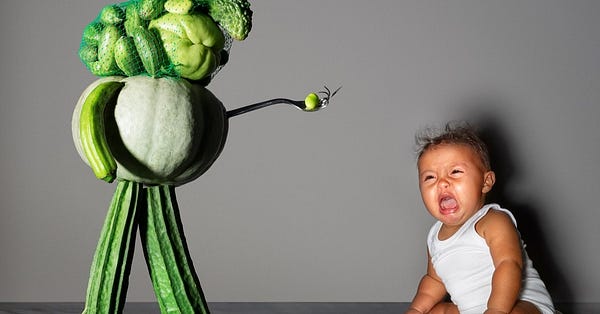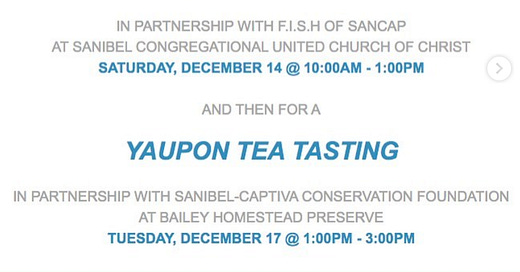In this week’s Sunshine + Microbes, we talk turkey about leftovers and hunker down for Papa John’s Day of Reckoning with a warm bowl of shakshuka.
If you enjoyed this newsletter, please forward it to friends. And if someone shared this newsletter with you, subscribe below.

Note: This past weekend was my birthday 🎉I celebrated 33 with a weekend filled with choice foods, including Carmela’s grandma pie, my favorite lasagne, and exquisite homemade ice cream from the one and only Mimi Fry, who really knows her milks. If you, dear reader, would like to give me a birthday present, please spread the Sunshine + Microbes love by forwarding this email to five or... fifty of your friends who might enjoy it.
Imagine you’re a carpenter, and you make beautiful wooden chairs.*** You cut down the trees yourself, and spend all year painstakingly crafting just 100 chairs. Then you take 30 of those chairs, and you make a big bonfire.
That’s like food waste! All that labor and precious resources, up in smoke. Did I totally nail that analogy? Over 30 percent of all food grown across the world is wasted. While a lot of this waste happens on the farm and during the many steps in the food chain that take place before it makes it to our fridge -- storage, transportation, processing, retail -- consumers, especially in wealthy countries like the US, play a large role. They buy too much at the supermarket, can’t finish the monster portion of pasta at the restaurant, their fruit goes bad in the fridge, or the leftovers get trashed. Once that wasted food hits the landfill, it basically creates a stanky methane bomb, which contributes to climate change. Yuck!
Now composting is a good solution (although not as good as simply not wasting the food in the first place). Get a tumbler as a belated Black Friday gift to yourself. Here are some of my favorite tips for reducing food waste:
DIY Stock. Keep a bag in your freezer for veggie scraps and another for bones and other meat scraps. Once they’re full, get a stew going. Just add the scraps to a pot, cover with water, throw in some salt (and some white wine if you’re feeling frisky), and boil it down for an hour or so. Then strain the scraps out and, voila! You got stock. I freeze mine in quart containers for easy use.
Accept It: Expiration Dates are Lies. My mother always said it when I was a kid, and I didn’t want to believe her. But then I became the person responsible for putting expiration dates on food, and guess what? I was just making shit up!
No one actually knows when milk is going to expire. There are a zillion factors that impact the final moment when food crosses the point of no return. There’s no industry standards or regulations when it comes to expiration dates. For the most part, expiration dates only serve to scare people into buying more of the product than they actually need (ugh, capitalism…). So instead of worrying about a completely arbitrary date, use the senses. If it smells bad or tastes bad, don’t eat it. If not, go forth and enjoy.
Meal Plan...But Also Improvise. I admire people that can meal plan, and knowing what to buy and make in advance is a great way to reduce food waste. However, allow at least one meal a week to be a complete improvisation. Just look in the fridge, see what needs to get used, and riff.
This is also the best way to become a good cook, as you’ll be forced to try new ideas. Fall in love with unexpected combos, and create an arsenal of go-to recipes and techniques.
Eat leftovers for breakfast. Cereal is such a waste of time. Now leftover shakshuka — that’s a breakfast.
With all that in mind, I hope everyone keeps enjoying their Thanksgiving leftovers!
***This feels like the right time to mention that the hunk from Sixteen Candles quit acting to become a woodworker. It truly does not get any dreamier, folks.

love,
Jackie

IRL!
Join Jackie for a pair of upcoming events on Sanibel Island.

The “Fighting Food Waste” workshop, hosted by F.I.S.H. will be the first in a series of three classes on “Cooking for the Planet: Healthy, Affordable & Climate-Friendly Kitchen Techniques.” Participants will make delicious meat and veggie stocks, fruit scrap vinegar and salt preserved citrus, and will leave with recipes and a jar of everything made.
RSVP to Kathy Monroe at 239-472-4775 or info@fishofsancap.org (space is limited).
Jackie will also be serving an afternoon tea at SCCF’s Yaupon Tea Tasting event on Florida’s burgeon tea industry.
Viral Culinary Tales
Sometimes strange and whimsical stories go viral online without them ever receiving the same attention IRL. Our Extremely Online Correspondent Matt Levin is here to report on the singular stories you might’ve missed.
John Schnatter aka Papa John returns. He gave a “tell-all” interview last week to WDRB in Louisville, where he appeared drenched in garlic sauce sweats. It only gets weirder from there. Real weird.
Fresh Links
Our favorite food and environment reads from around the internet. Give’em a click👇
👶🥗Can Babies Learn to Love Vegetables? | New Yorker
The New Yorker goes loooong on the history of nutrition for kids and baby diets in the U.S. The article visits Colorado to observe the Good Tastes Study, where researchers try to figure out how to get toddlers to eat more veggies. Deep green leafy vegetables provide essential vitamins. Yet they are rarely found in offerings from baby-food manufacturers because they believe children won’t eat them — even ones just getting started on solid foods. That’s an issue since what we eat when we’re young we tend to keep eating when we’re older.
That process starts earlier than any parent might imagine:
“Palate training” is the buzz phrase for this, though it makes babies sound a bit like interns at a wine bar. We learn to eat what we’re given to eat, and that education begins before we’re born. When a pregnant woman eats a green bean, its flavor winds its way into the amniotic fluid around her fetus, and later into her breast milk. “Carrots, vanilla, alcohol, nicotine, mint—I’ve never found a flavor that didn’t get through,” Julie Mennella told me. Those tastes, and the colors and textures of things that contain them, come to signify food in babies’ minds. Children whose mothers ate potatoes with garlic while pregnant, a study in Ireland found, are more likely to enjoy potatoes with garlic ten years later.
There’s an ironic twist. The problem isn’t the toddler’s pickiness. It’s what their parents store in the fridge and pantry. In parts of the world like Africa, children grow up exposed to a varied smorgasbord of foods. The author accompanies a refugee named Rachel in Portland, Maine as she shops at a Sudanese food market and makes the Congolese dish lenga-lenga for her family. The stew uses amaranth leaves (known as lenga-lenga), eggplant, catfish and all sorts of powerful spices. Rachel’s young daughter Soraya devours it alongside the rest of the family. Unfortunately U.S.-born parents don’t often cook such wholesome meals:
Babies do have some sense of what’s good for them, it turns out. “Self-weaned” infants, who dispense with purées and just gnaw on their parents’ food, tend to be slimmer and healthier than those raised on baby food. But only if their parents eat healthy meals themselves. And there’s the catch. The average American’s diet is so abysmal, Amy Bentley told me, that most babies are better off eating commercial baby food: “They’ll get more and a greater variety of fruits and vegetables than those fed the family meal.” To learn to feed our children, we need to learn to feed ourselves.


🥕🍅🥒Baltimore is at the Vanguard of a National Black Vegan Movement | Civil Eats
In the Charm City, black leaders are fighting back against the steep decline of African-American farmers in the country — a number that has fallen from close to 1 million in the 1920s to 45,000 today. At the same time, African-Americans also are more likely to suffer from diet-related illnesses. Baltimore community organizers are leading some extraordinary veggie-focused initiatives.
A couple of blocks from the site of D’Angelo Barksdale’s “pit” in HBO’s The Wire, for example, The Land of Kush serves up black-eyed-pea fritters and pork-free collards. It’s headquarters for Baltimore’s multiple vegan restaurant weeks and for the Black Vegetarian Society of Maryland, which boasts an email and social-media reach of 4,000 people. It’s also home to the annual Vegan SoulFest, which draws more than 10,000 people from across the nation, mostly African Americans, and has seen a seven-fold increase since it began in 2014.
You can be in line at The GruB Factory, another vegan café certified by Baltimore’s Pan-African Liberation Movement, and meet Marvin Hayes, a 46-year-old Sandtown-Winchester resident who teaches composting to kids and who fought off a proposed trash incinerator in Curtis Bay, south of Cherry Hill, amid already-poor air quality. You can go on a tour of Hayes’ soil-making facility at Filbert Street Community Garden and meet curious farmers who have come here on learning trips from other parts of the city. And you might find a Black Millennial pruning tomato leaves at Whitelock Community Farm, wearing a t-shirt from SoulFest, a co-sponsor of the Afro-Vegan Society, a clearinghouse for finding Black-owned vegan restaurants all over the U.S.
Additional projects include the “egalitarian collective”Baltimore Free Farm. Chef Crystal Forman gives demonstrations around the city for the organization on “how to prepare healthy, vegan meals with what they got.”
It’s an inspiring model for the ways local movements can advocate for environmental, food and racial justice.
🌶️How to Pick a Pepper | 99 percent Invisible
New Mexico is the only state with an official question: Red or green? The prompt refers to the state’s famous chilis. Currently there’s a more pressing question for residents of the state: “How can we save the chili?”
From 1997 to 2018, the number of chili peppers planted have fallen from some 30,000 acres to 8,400 acres. That’s despite increasing demand for the peppers (if you’ve never experienced Hatch chili season, you’re missing out). The reason for the chili’s downturn is mostly driven by a labor shortage. It’s arduous work picking these peppers. Machines can’t even get the job done. But what if…chili scientists can breed a chili that’s more pickable. This is a rare, contemporary news story where technology isn’t the downfall for us all. Listen up:



Shakshuka

Shakshuka — an egg dish cooked in spiced tomatoes — is excellent comfort food found across the Middle East and North Africa, not to mention every chichi brunch menu in the United States. Florida tomato season is finally here (sit on it, northerners) and Farmer Danny of 12 Seasons Farm is keeping me well-stocked with beautiful heirlooms. A simple lunch of shakshuka with whole grain flatbreads made a perfectly satisfying lunch for anyone enduring this week’s cold snap.
Serves 2-3
Ingredients
5-6 nice tomatoes, roughly chopped, or 1 can of crushed tomatoes
1/2 onion, sliced
A few garlic cloves, chopped
1-2 eggs per serving
Additional veggies for added bulk -- peppers, eggplant, zucchini, last night’s green beans, whatever sounds good to you
A large pinch of cumin, ground coriander, and chili flakes
A large pinch of dried herbs like thyme and oregano
A handful of fresh herbs like mint, cilantro, and parsley, chopped
Salt to taste
Yogurt and/or feta to finish
Step-by-step
In a medium saute pan, heat a glug of olive oil over medium heat. Add spices and dried herbs. Once they begin to sizzle, add onions. Cook onions until they soften, then add garlic and cook until just soft.
Add in any raw veggies like peppers or eggplant. Once they begin to soften, add tomatoes and at least five-fingers of salt. Let the mixture cook over medium-low heat for 20-30 minutes. Taste along the way, adding more salt, spices, or perhaps a glug of honey as needed. If adding already cooked veggies (I added leftover green beans from Thanksgiving and it slayed), throw them in now.
Once you love the way the tomato mixture tastes, crack the eggs directly into the tomatoey goodness . Cover with a lid and cook until the whites have solidified. Garnish with fresh herbs, yogurt, and/or feta. Eat over grains of choice or with flatbread. Reheat leftovers for a luxe breakfast the next day!

Journalist Ian Boudreau put together a Twitter thread of very good dogs who destroyed Thanksgiving meals.



And we’d be remiss to exclude this this classic from over the summer.
Talk to Us
Send in your comments, gift suggestions, mailbag questions, or cooking tips: sunshineandmicrobes@gmail.com. Also do us a favor and follow us on Facebook and Instagram.
If you enjoyed this email, please share it with others. If someone forwarded this to you, click the button to sign up:
-------------------------------------------------------------------------------------------------
Sunshine + Microbes team
Jackie Vitale is the current Chef-in-Residence at the Robert Rauschenberg Foundation and co-founder of the Florida Ferment Fest. Her newsletter explores the intersection of food, culture, environment and community.
Matt Levin is a freelance reporter based in Colombia. He edits Sunshine + Microbes and contributes other scraps to each issue.















